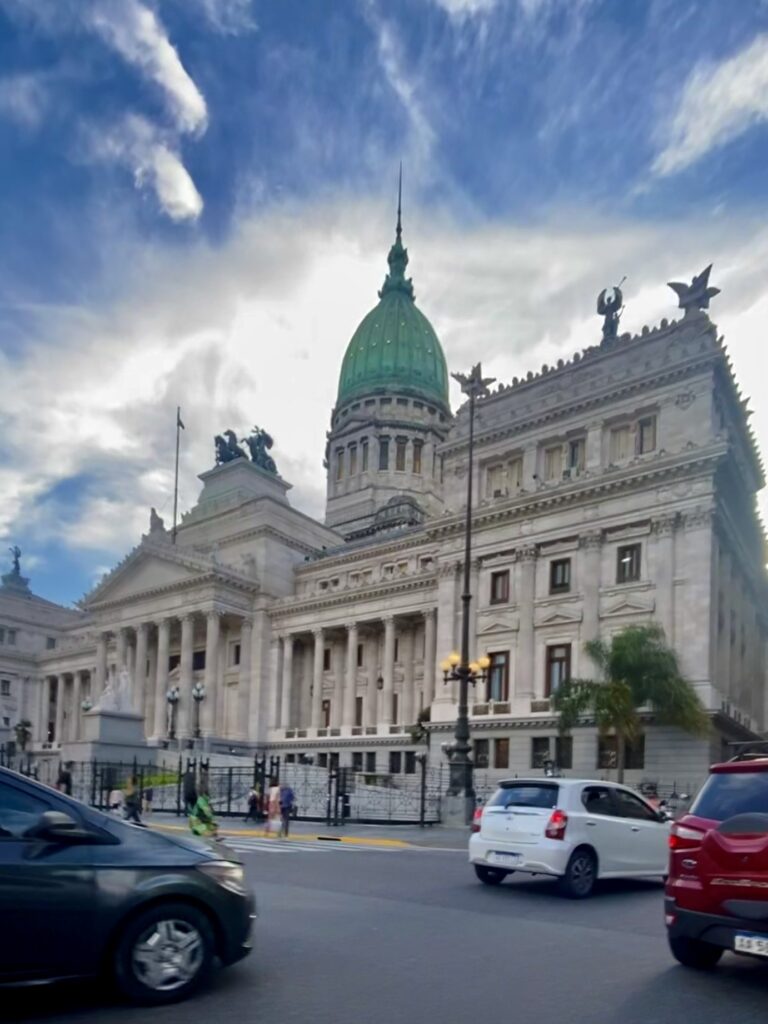
This week was filled with last minute errands and loads of sightseeing as we wrapped up our time in Buenos Aires.
Lowlights
Starting with lowlights again this week because we had some real downers.
Mosquitos
The first one was the brutal attack by mosquitos. Throughout our time in Mendoza we had little problems with mosquitos, but Argentine Facebook groups said they were quite bad in Buenos Aires. When we arrived in BA they had already gone, and we enjoyed a couple weeks without incident. Unfortunately, the massive rains storms activated a cycle of egg hatching, and they were out for blood, literally. It was like a light was switched on. Saturday, no mozzies. By Sunday morning they were patrolling the streets like a cartel. They did ease up throughout the week but then the brutal attack returned.
We changed up our habits and plans trying to avoid them. It was a good reminder that our upcoming travel to Iguazu Falls (between Argentina and Brazil) and South Africa will have more mosquitos in general but also more risk for disease from mosquitos. We actually got our yellow fever vaccine in BA this week. This is an entry requirement of South Africa if travelling from certain countries – like Brazil. We had tried to get this vaccine in the US but in 2021 it was not available. So at least we were able to get it but it cost $100 USD each!!
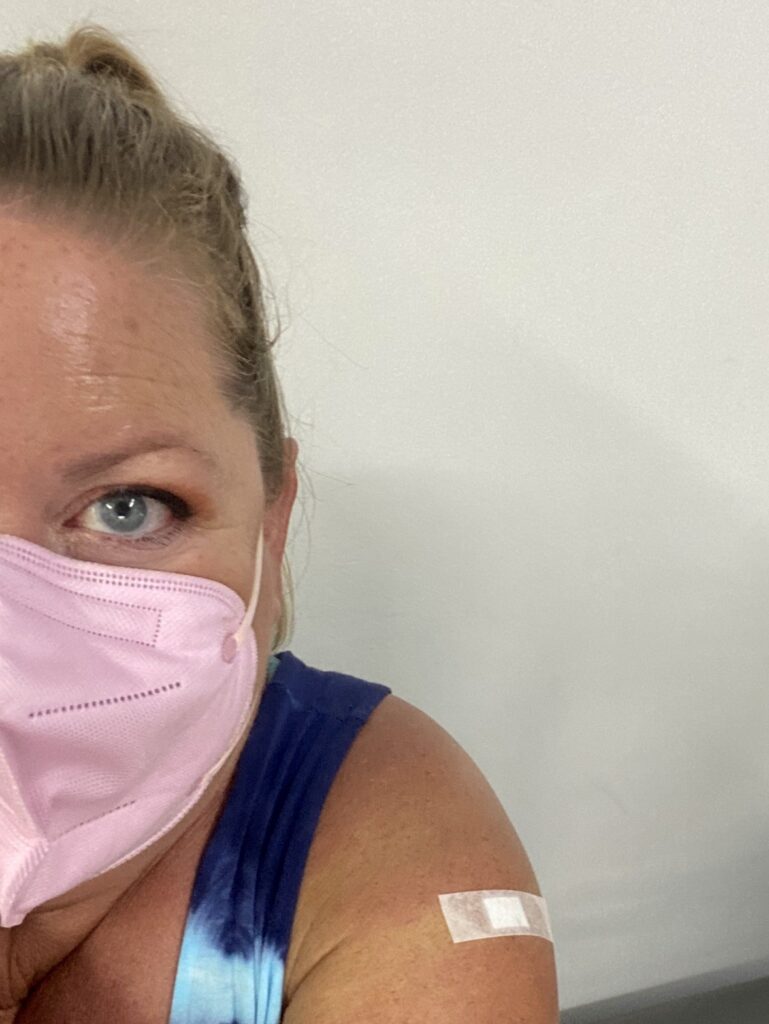
Sushi
Have you ever ordered a tuna roll….and when it is served, the inside is canned tuna?!!!!!!! Seriously what the heck? Has anyone else experienced that?
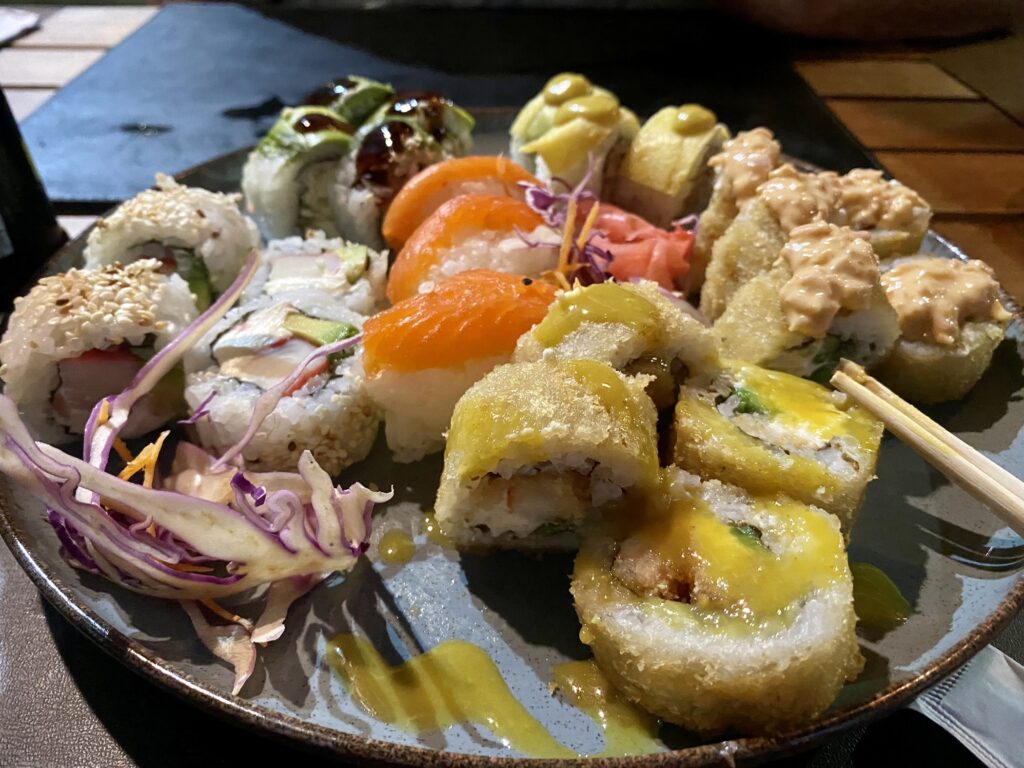
There’s sushi all over this city and we finally gave in and ate some. Buenos Aires, while on a river, is not a spot for fresh fish for sushi. Don’t recommend it. Our rolls were canned tuna, chicken, and salmon. Salmon is really the only fish they use in sushi here.
I hurt my wrist on a bus and twisted my bad left ankle. We also had last minute flight cancellations. At least all that happened right at the end of the trip. Just felt like a plague of travel mishaps…
So let’s get to all the good stuff!
Highlights
Friends
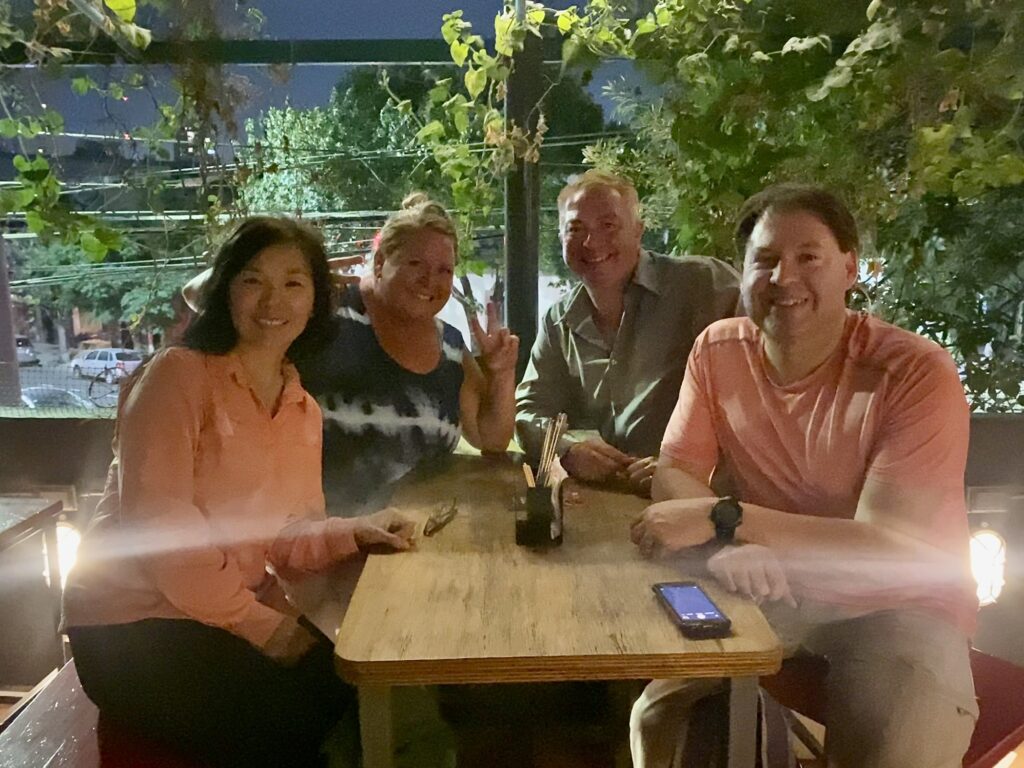
We had a steak dinner with Ellie and Eric, a couple that we first met on a cruise from Japan to Seattle last year. It was so fun to catch up over Argentine dinner and vermouth!
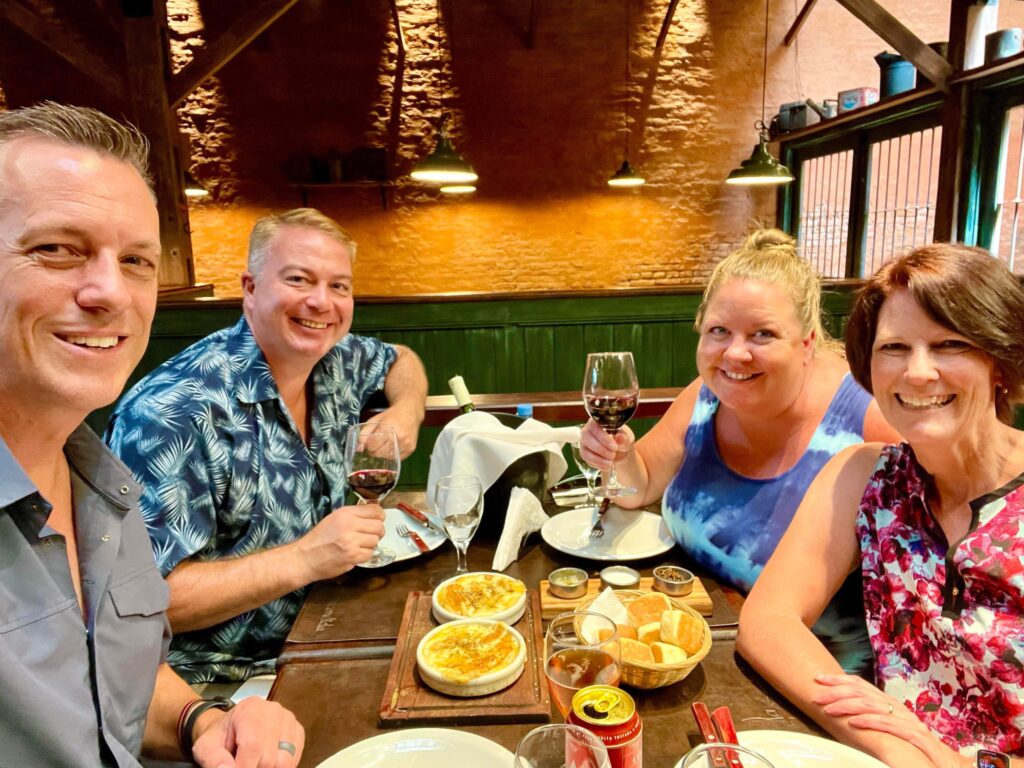
We met Kathy and Ray over a steak dinner and baked cheeses with lots of discussion about travel. I love making new friends! Hope to see them both somewhere in the world again.
Parks
Throughout our weeks in BA, we have been trying to walk through as many parks as possible. Here are some of the last few parks we were able to make it through.
Botanical Garden Carlos Thays

We went to this garden naively thinking we were prepared for mozzies. Corey wore long pants and closed toe shoes and we had a bottle of DEET with us. But as soon as we entered the park, a cloud of mosquitos encompassed us. We stopped at the first bench to apply the DEET, and the mosquitos were landing on us as fast as the DEET was. Corey counted more than 20 mosquitos on his pants and shoes, and six on the back of my shirt. In all my travels I have never been swarmed by mosquitos as badly as this.
The rain had made the botanical garden into a swamp, with the fountains and statues providing space for mosquito breeding. Ugh!! We briskly walked through while shaking the mozzies off my shirt. It was awful! Wish we had toured more parks before the mosquitos took over the city.
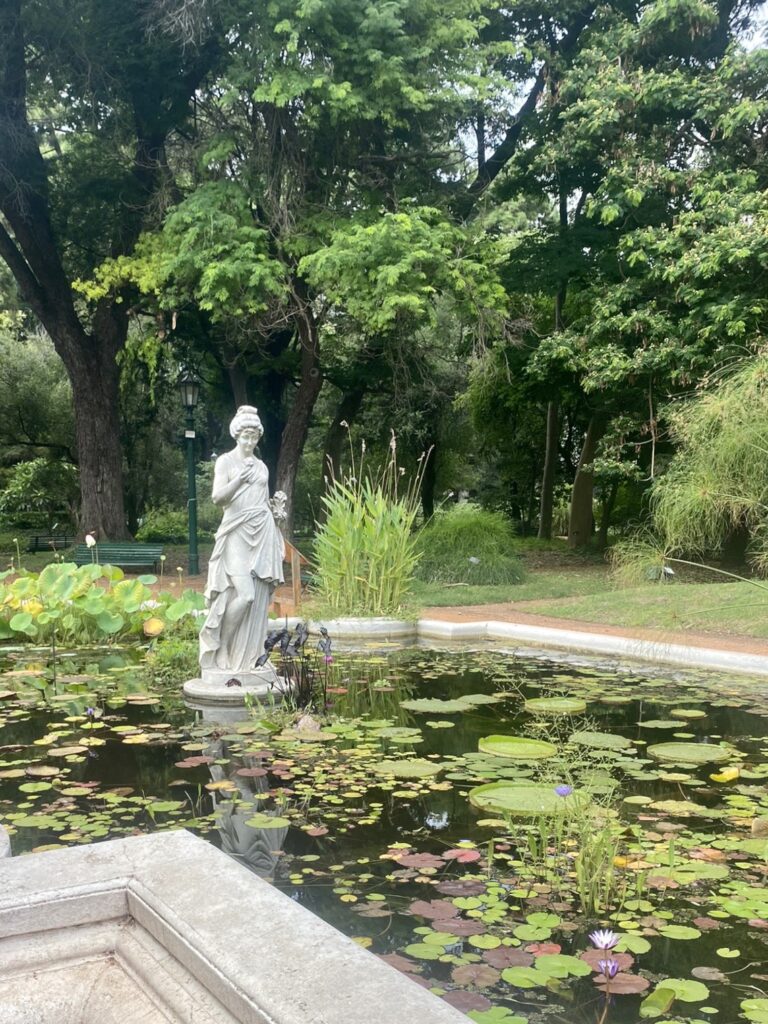
Eco Parque
This is the site of the former Buenos Aires Zoo, and the inspiration for the transformation that the Mendoza Zoo is currently undergoing. After running away from the mozzies, we crossed the street to walk through this lush garden space, filled with the historic legacy buildings of the old zoo. The DEET was glistening all over our bodies by this point and we were rarely bothered by any blood suckers while we walked around (although we did see some clouds of them).
The Eco Parque has some animal enclosures but many animals are allowed to roam freely through the park. The pumas are kept in the former lion enclosure, but they have let the vegetation grow to a natural state. We saw some familiar faces but also encountered new animals!

The Eco Parque is free to enter, and was one of my favorite places in the city. We could spend all day walking around.
Events
Ballet

Parque Centenario, one of the larger parks in BA, has an amphitheater that hosts concerts and events throughout the summer. We attended a performance by the Ballet Contemporáneo del Teatro San Martín company. It was a wonderful contemporary production and we were lucky that it was a breezy night and the wave of mosquitos relented.
Tango
I thought for sure that with a month in Buenos Aires that we would have time to watch multiple tango shows. This is tango town after all. We each did some research and found that there are many ways to experience tango in Buenos Aires, so it is important to decide what experience you are looking for. We would break it down into the following categories:
- Production show: These are the tickets that the street touts are trying to sell you. Broadway-style stage shows. We could not find any shows that did not also include some form of food or drinks, either a full dinner or just drinks and appetizers. The current price for these was around $75 USD per ticket.
- Smaller dinner show: Many restaurants in the tourist zones advertise tango performances. These are available without a separate ticket, although the food prices are likely elevated because of it.
- Street performers: In public squares or at outdoor cafes, tango dancers will throw down a floor and show off moves. A few pesos in the hat is a bargain for a close-in tango experience.
- Milongas: These events are your opportunity to tango. A milonga can be held in a dance hall or any public space. They often start with lessons before the dancing begins in earnest. But even being a wallflower provides the chance to watch an authentic tango experience as the locals navigate the dance floor. Good information can be found at Hoy Milonga, and there are milongas throughout the city, throughout the week.
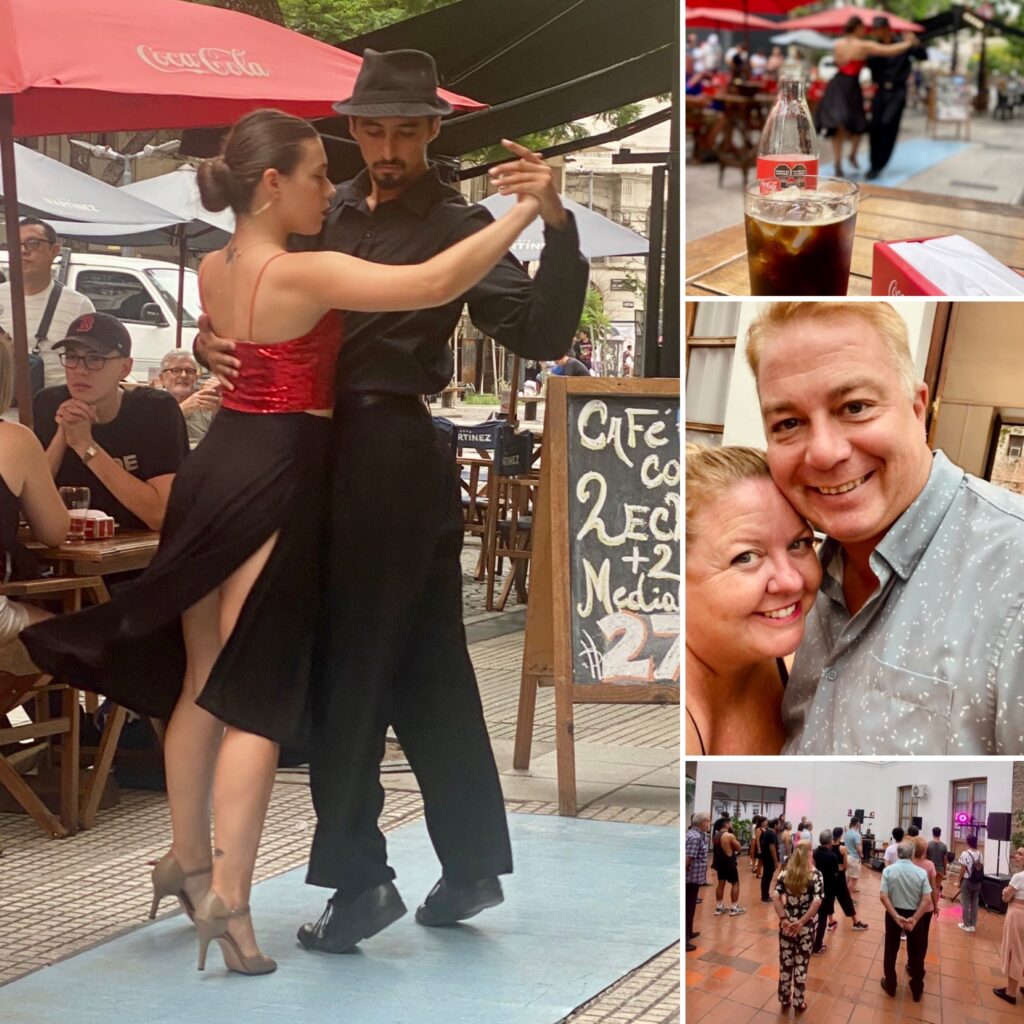
For us, we skipped the indoor shows. We spent a few minutes watching street performers, and sat for an extended performance at a cafe near Florida Street.
We also went to a beginners class at a milonga at a museum. We attended the class and learned some basics although the instructions were all in Spanish. We tried but most importantly we had fun!
Food and Drink
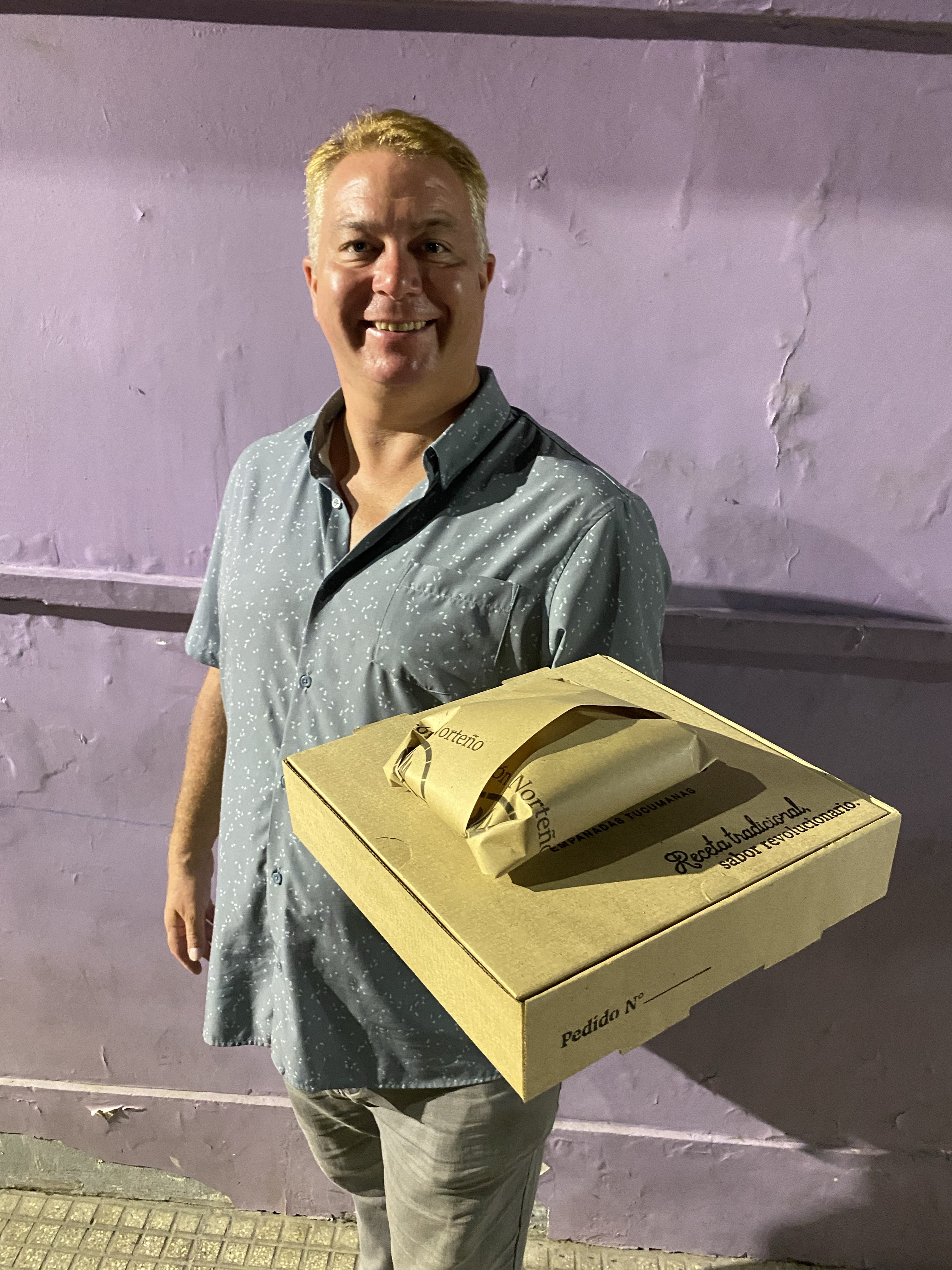
Submarino
This has been on my list to try since arriving in Argentina. A chocolate is submerged in hot milk like a submarine diving into the ocean. I thought the chocolate would be shaped like a submarine but mine was just a block. Still delicious! Watch this short video on Insta.
Pizzeria La Mezzetta
We saw this 1930’s era pizzeria on a YouTube travel video. It was a 30-minute bus ride from our apartment into a quiet residential neighborhood, and I am so glad that we went. The pizza was incredible. Thick crisped bread with tons of gooey cheese on top. The specialty is the fugazzetta, with an absurd amount of sweet onions. Slices are around $1 USD. They also have two kinds of empanadas (we tried the flavorful beef). We also had a slice of the ricotta cake, which was a decent baked cheesecake.
This is a no-frills establishment, but one that has produced thousands of pizzas over the last 100 years. Grab a cup of cheap wine and enjoy!
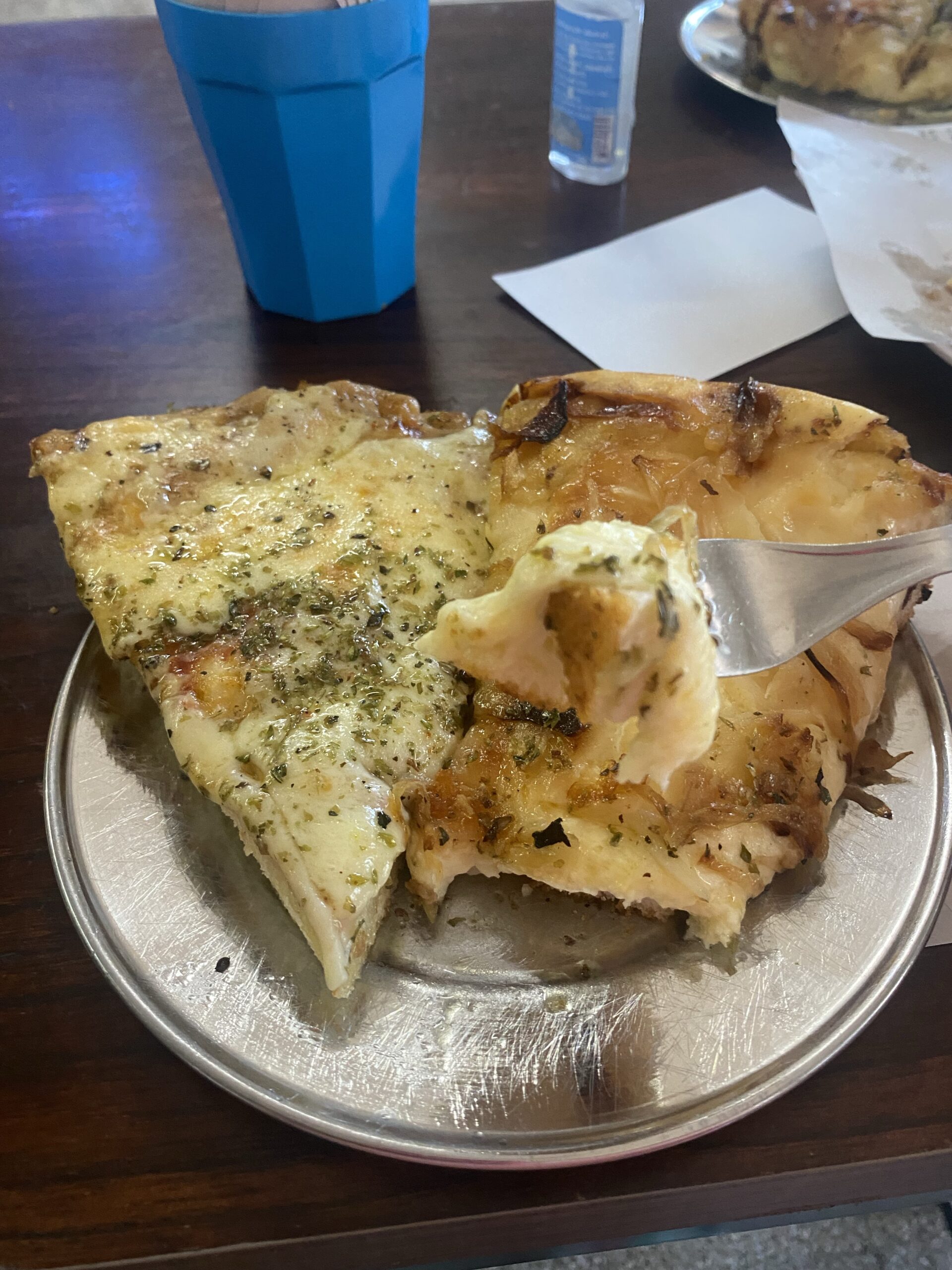
Strange Brewing
Just several blocks down the road was a craft brewery that had been on Corey’s list. We stopped in for a few half-pints of sour beers. They really hit the spot after wolfing down the pizza slices.
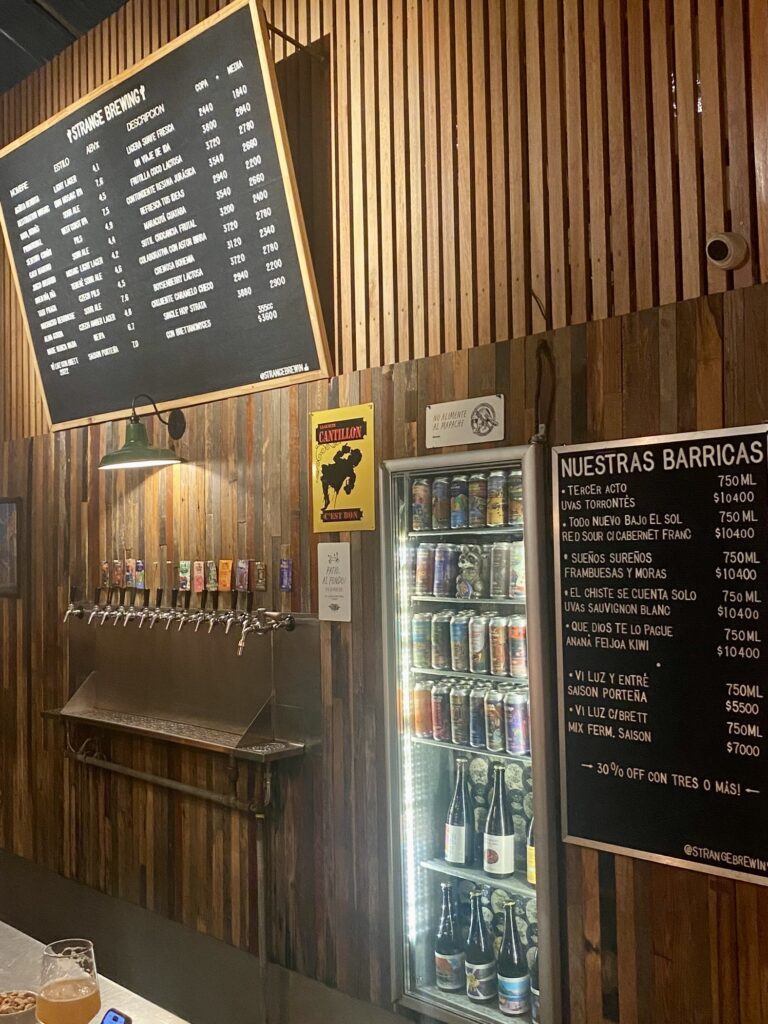
Museums and Special Places
Our big tourist day started with visiting churches.
Iglesia del Salvador
Unassuming from the outside, we walked in and appreciated the frescoes, art, and arches. It is a Jesuit church.
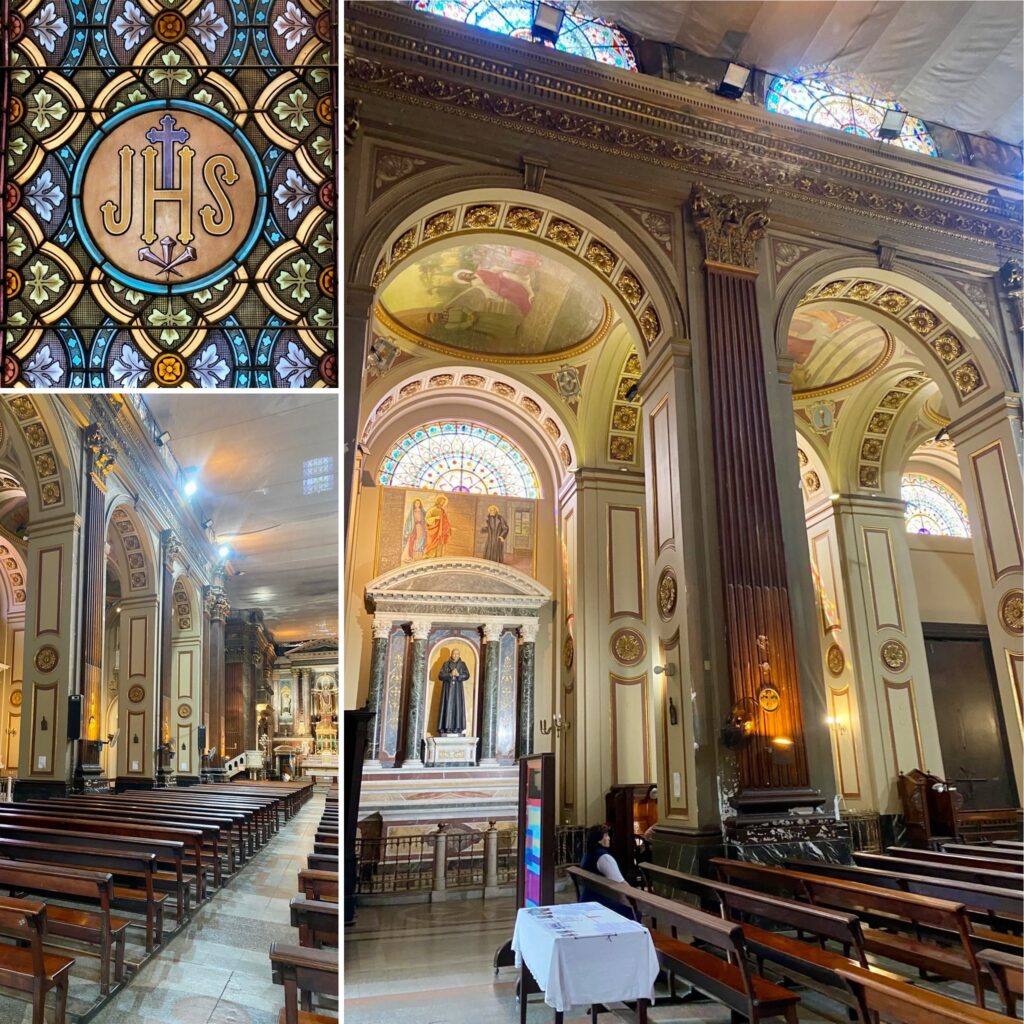
From there we walked down some familiar streets until we reached the Plaza de Mayo. So much history in one place!
Metropolitan Cathedral
This site, facing Plaza de Mayo, has been a church since 1580. The current construction is a mix of styles. To us, the front resembles a Roman temple but the inside is more like a classic Italian cathedral.
The church is also the mausoleum for General San Martin, making it an important point for Argentines, Chilenos, as well as foreign tourists. The general’s body is guarded by two uniformed soldiers with sabers, an impressive sight.
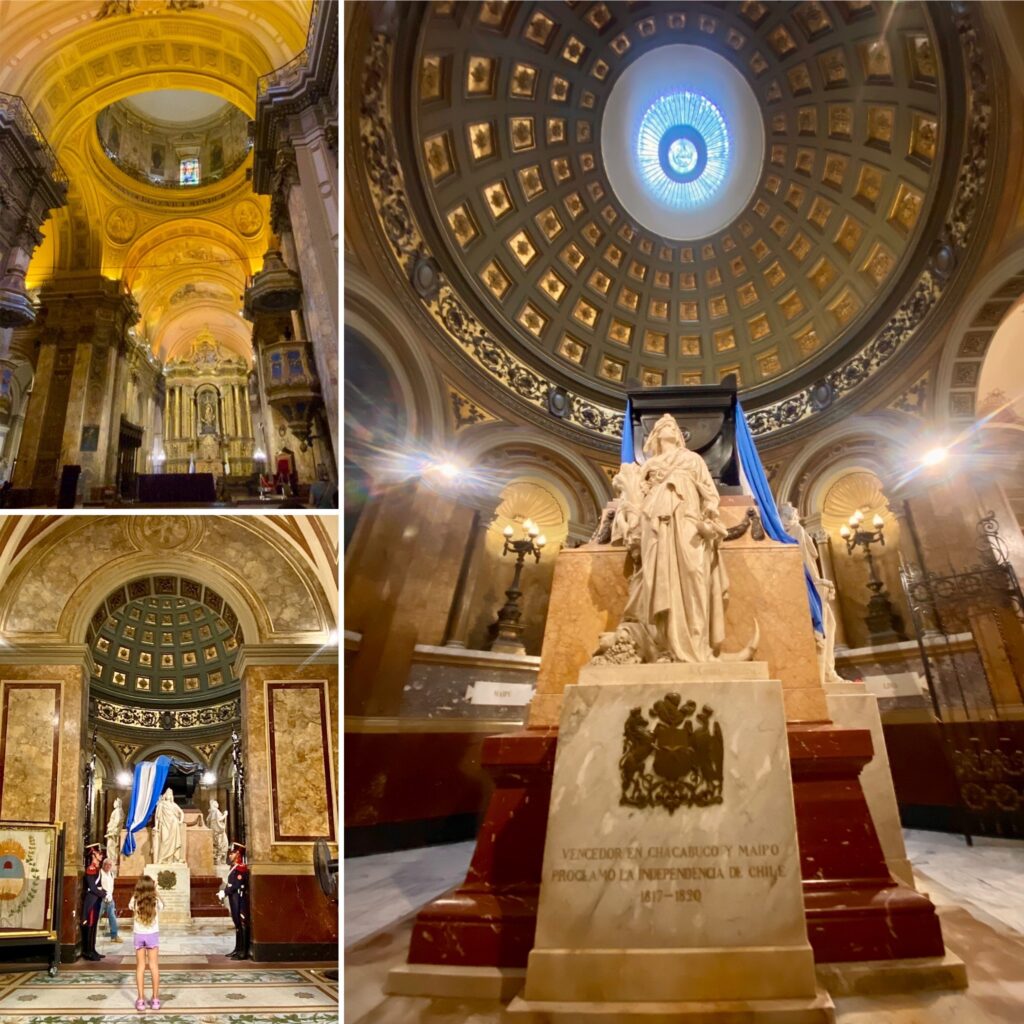
The church is massive and you would have no idea just by looking at the outside. It is also a source of pride to Argentines as Pope Francis was the archbishop of this cathedral for 15 years.
There are many other large churches in Buenos Aires. As the Spanish and Italians immigrated to Argentina, they brought the Catholic tradition of awe-inspiring churches. Many of them are unassuming on the outside but reveal themselves once you walk through the doors.
Casa Rosada Museum
Casa Rosada is the imposing pink-hued building on the east side of Plaza de Mayo, which serves of the offices of the Argentine president (but not the presidential residence). From what we can tell, and contrary to the Buenos Aires English tourism website, there is no longer public access to Casa Rosada. But there is a free museum hiding directly behind it!
You could walk right past this modern building and have no idea it was a museum. We were looking for it and nearly walked right past it. Corey thought it looked like a subway station because all you can see is the stairs heading down from the ground level.
There is no sign indicating what the building is, only a sign on the window stating free admission (in Spanish). Hey, if it’s free we will take a chance and walk inside!
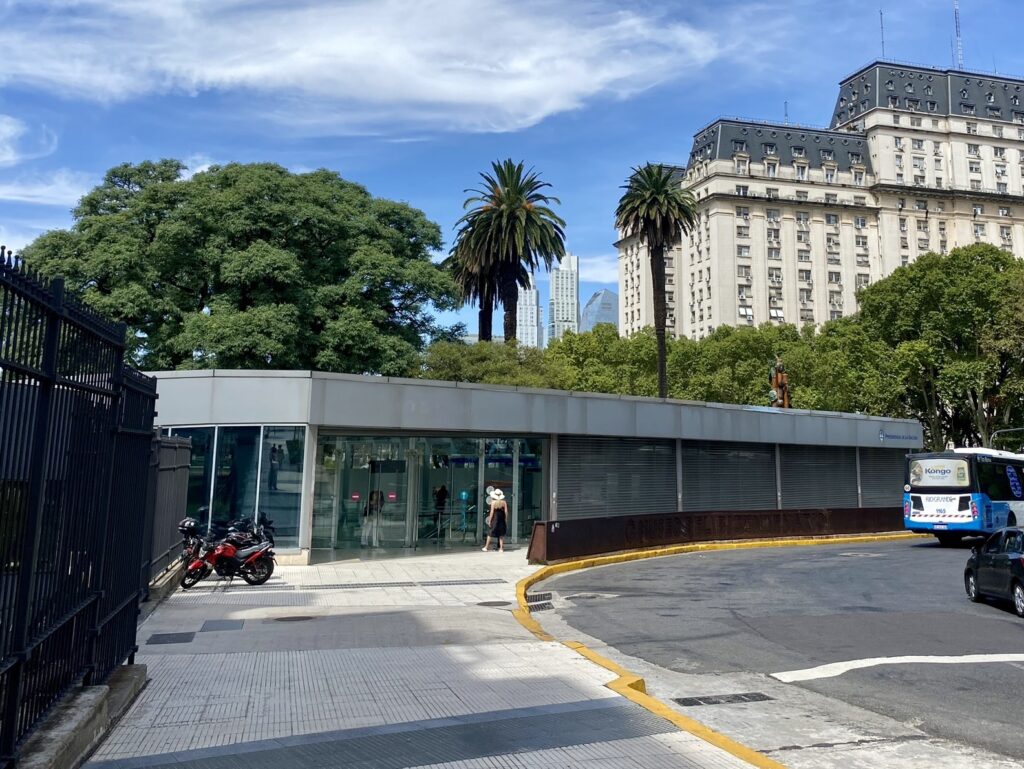
Once down the stairs, the museum features part of the construction from the original fort that occupied the site hundreds of years ago.
There are items from throughout Argentina’s history, including objects from patriots and presidents.
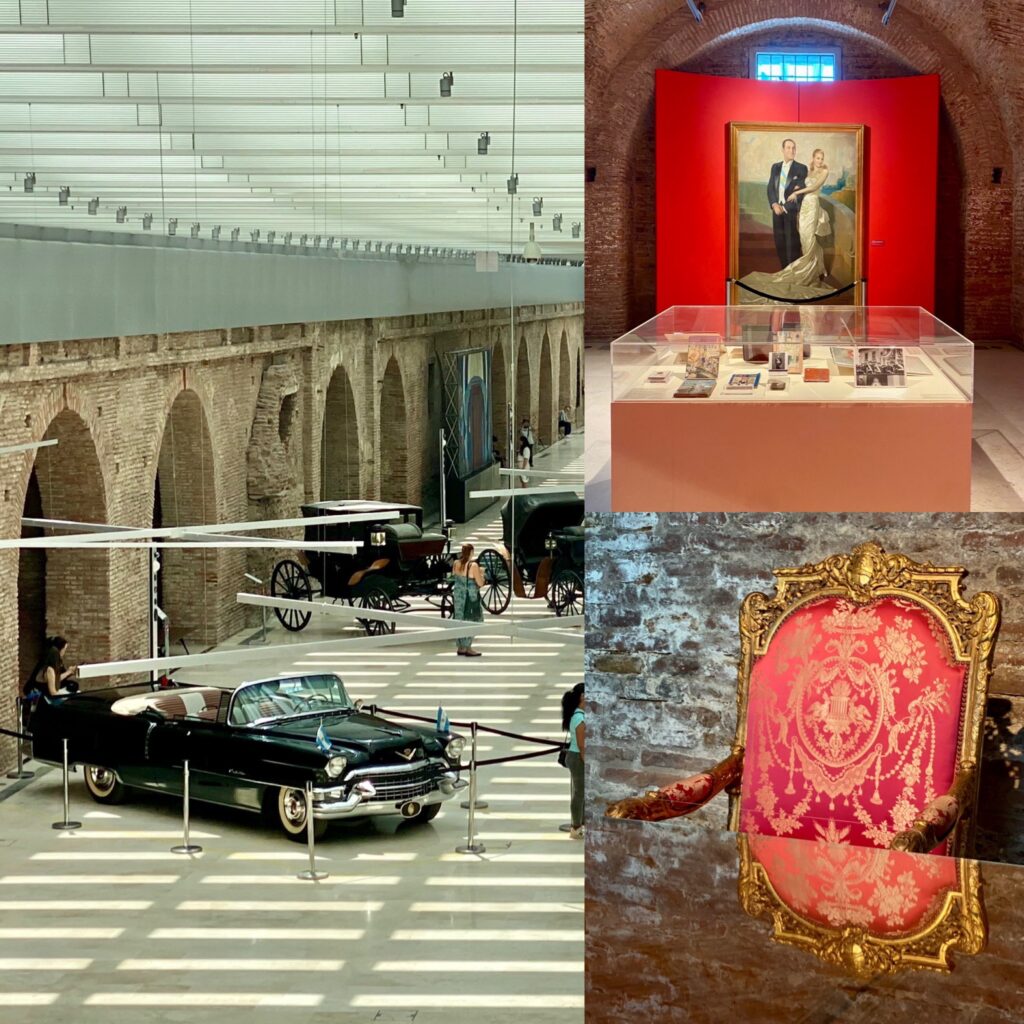
We both really enjoyed a mural called Ejercicio Plástico. This was painted on the walls of a suburban basement in 1933. In the 1990’s it was removed from the basement. Eventually it was transported by cranes into the museum and then the museum was finished around it, including the ceiling. The intent of the artists was to take the viewer into a glass box in the sea, with the light from various angles evoking shimmering movement in the mermaids and sea creatures that are depicted.
Viewers are encouraged to sit on the floor to see the piece from different angles and experience full immersion. No photos of the mural are allowed.
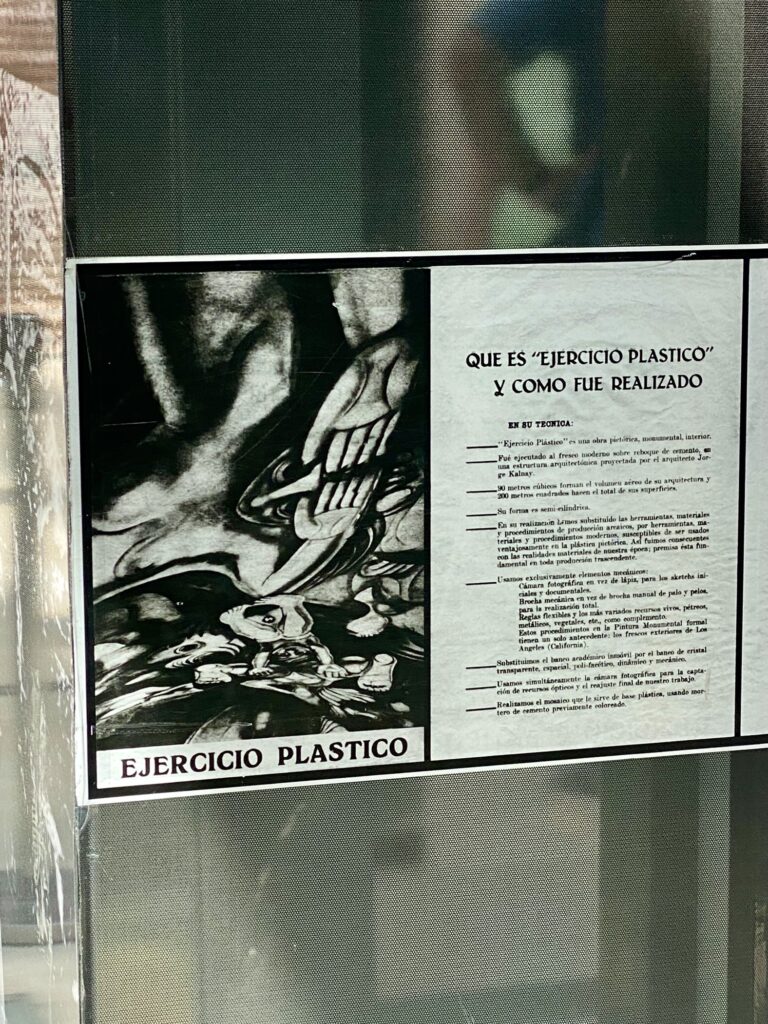
Cabildo
This building faces Plaza de Mayo across from Casa Rosado. The building’s long history is interesting: it grew over time (adding further wings and a tower), but was then partially demolished to make room for roads on either side. The current building is very similar to how it looked historically, but very far from the original.
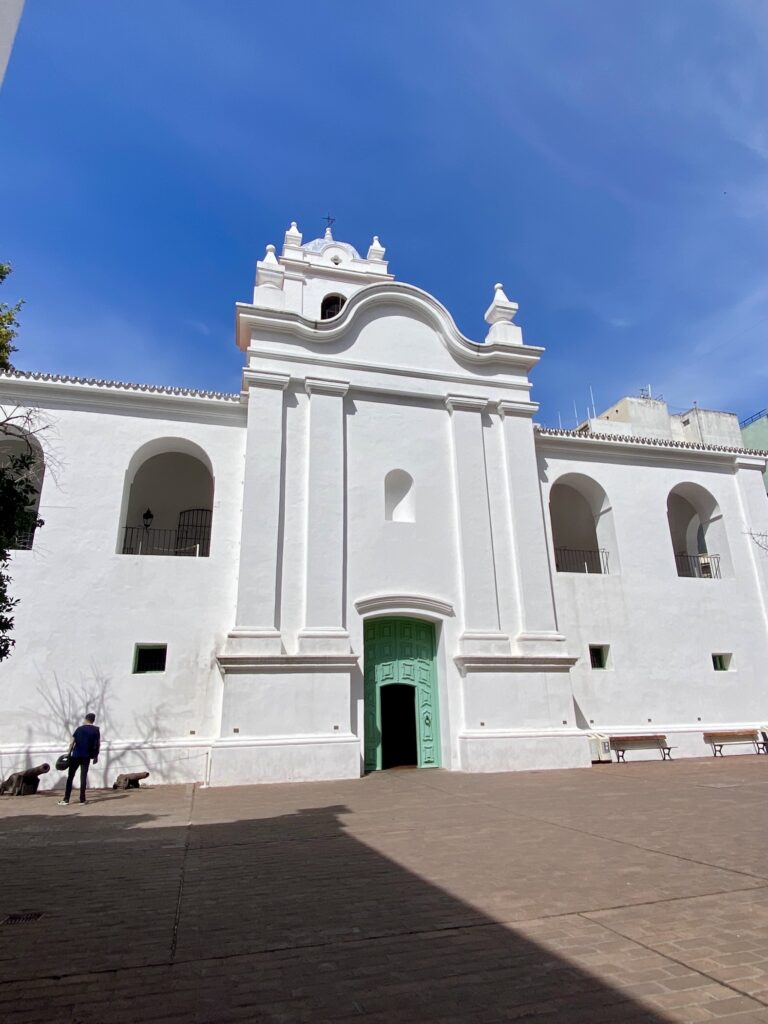
Currently a free museum, there is a concise history of the Argentine revolution and the early history of the country, as well as the history of the building and its use as a city administration building (including the use as a prison).
The combination of the Cabildo and Casa Rosado Museum gave us plenty to learn about Argentina.
Manzana de Las Luzes
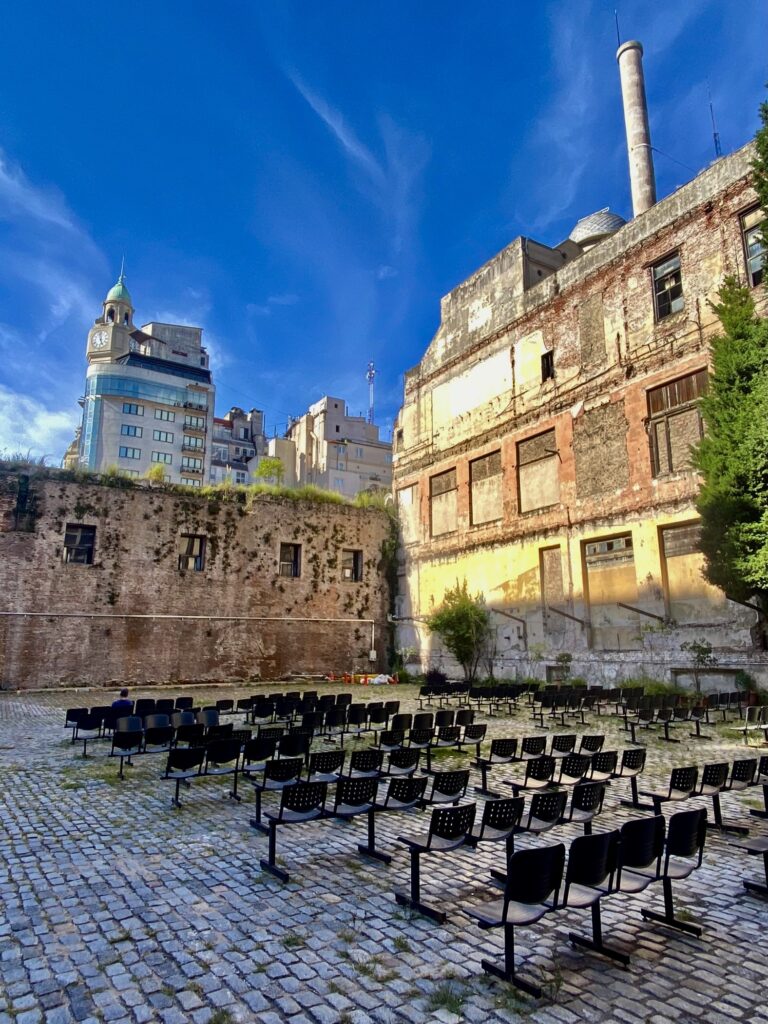
Just south of Plaza de Mayo, this block of buildings dates back to the 1600’s, when the Jesuits began developing the land. It includes San Ignacio, the city’s oldest church, and another beautiful large cathedral to visit. The buildings have been added to and subtracted from over the years, and it was interesting to see the various layers of brick and wood, and the courtyards and cloisters that are not visible from the street. In addition, there still exist tunnels underneath the complex that lead to other parts of historic Buenos Aires (these can only be seen in tours, which are not currently offered).
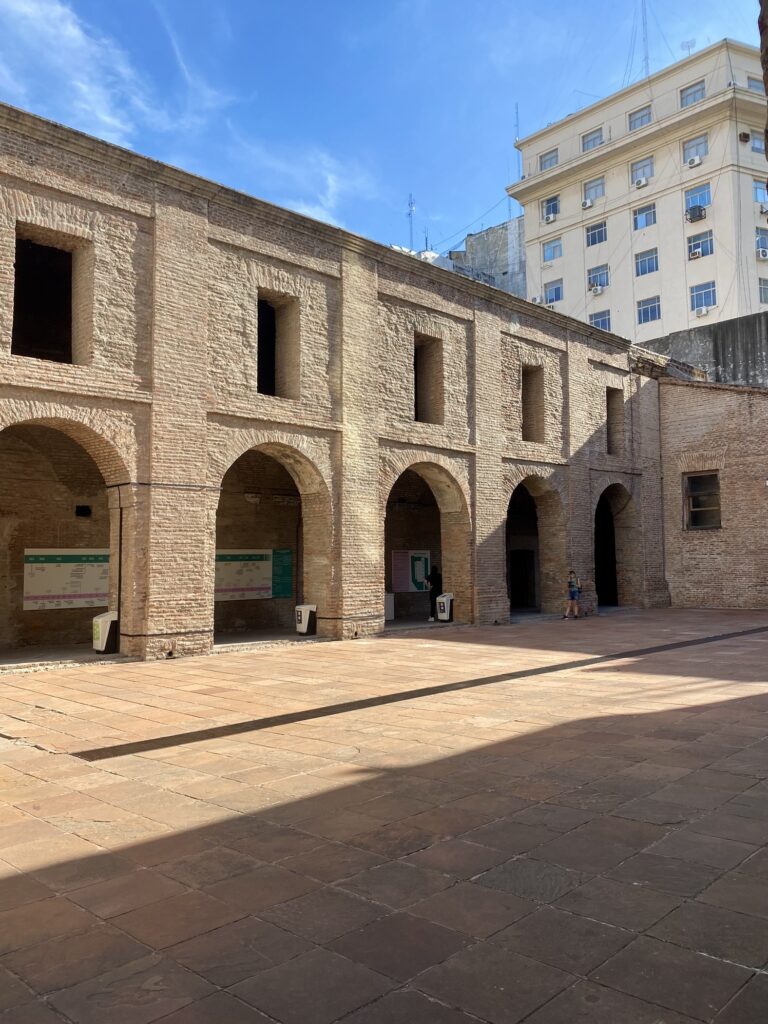
The University of Buenos Aires was also founded on the site. One of the colleges remained until the 1960’s when the military government conducted an academic purge, with the police attacking the University, and the government removing its independence. In 1972, the University buildings were demolished leaving only an open space.
Cistern Museum
This subterranean site is around the corner from Manzana, with the entrance inside the lobby of an office building. We had stopped by here but it was closed. We came back later and it was still closed.
According to Google reviews, the Cistern closes for the summer months. This is not listed at the site itself, or on their website, each of which show normal operating hours. We emailed them regarding their status but did not receive a response.
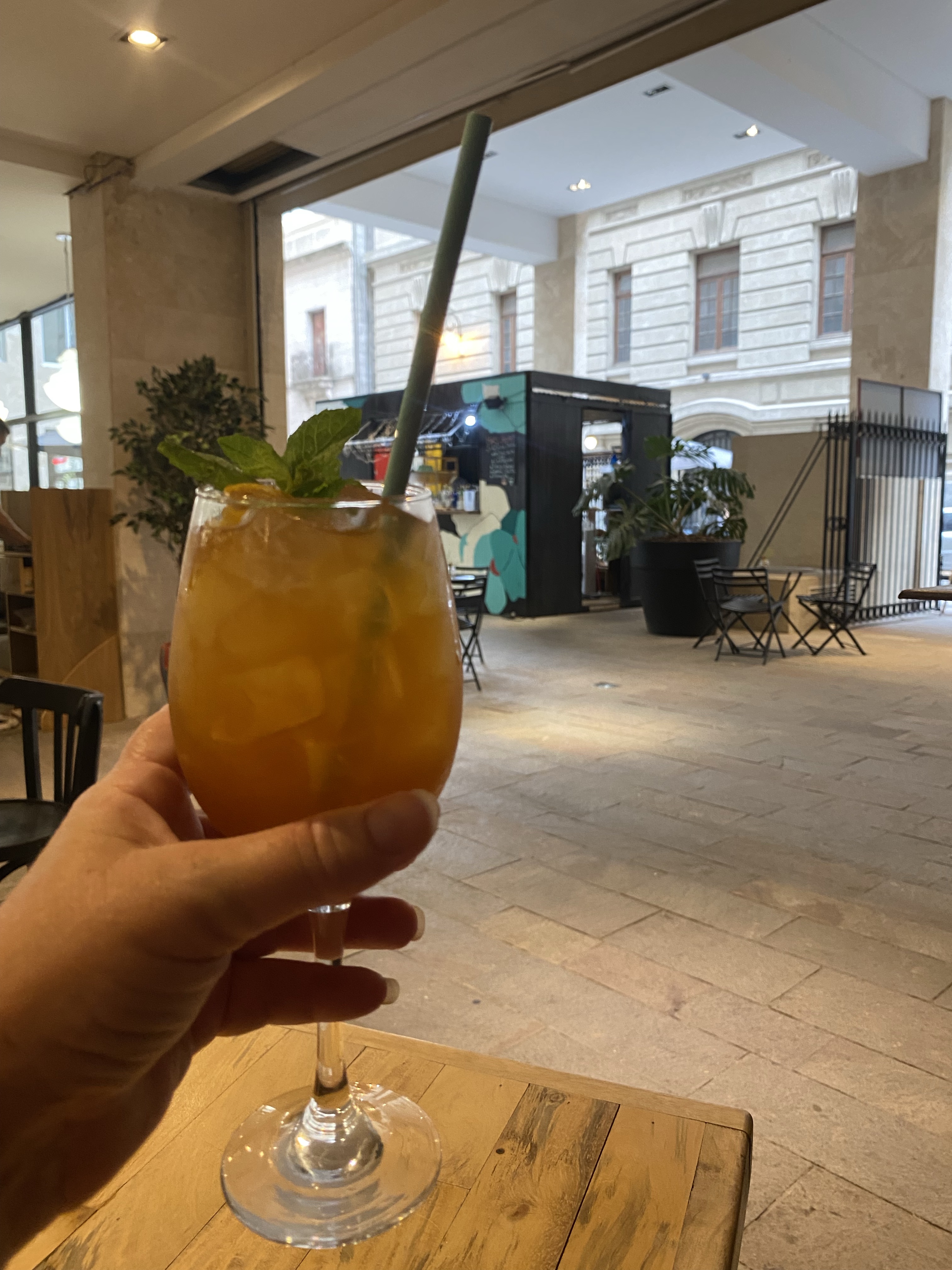
Our consolation prize was happy hour drinks at a lively bar located in the courtyard of the office building. We watched the office workers enjoying the end of their workweek as they met up to welcome the weekend.
Recoleta Cemetery
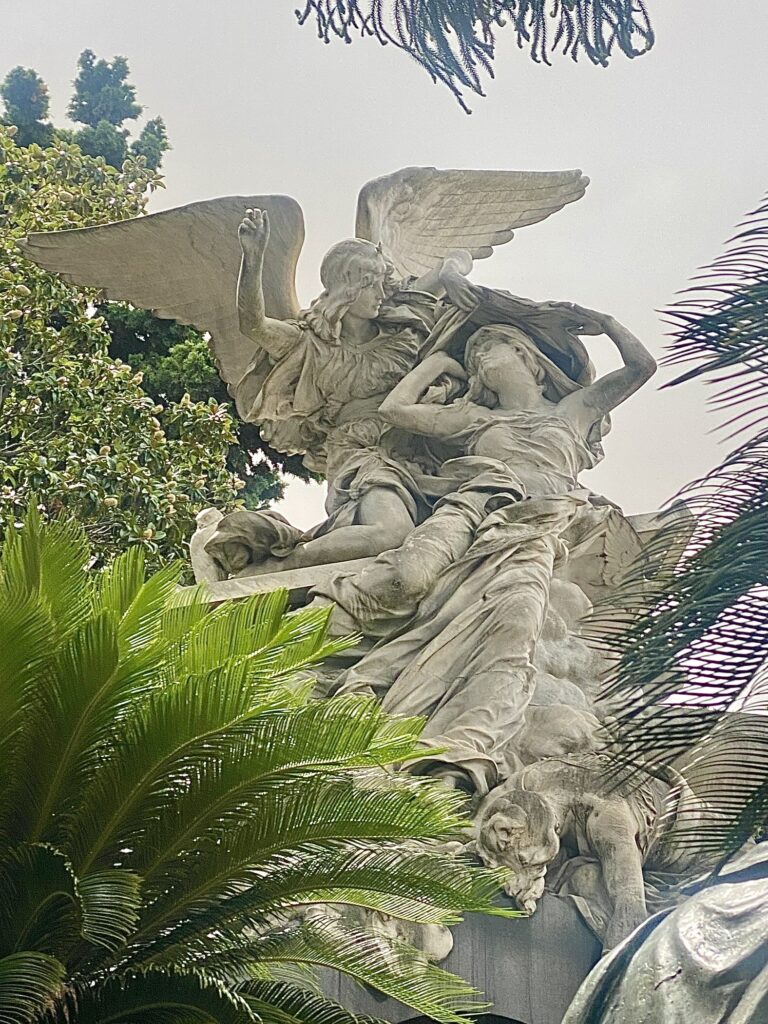
Sometimes called the City of Angels due to the abundance of angelic sculpture, this 14-acre cemetery is a highlight of a trip to Buenos Aires.
Recoleta Cemetery is significant as both a historical and cultural landmark. It is the first public cemetery in Buenos Aires and contains the graves of many notable Argentinians, including 26 presidents, Nobel Prize winners, and the beloved Eva Perón, making it a rich repository of Argentina’s history and heritage.
When the cemetery was established in 1822 on the site of an orchard, the families had blank slates to create the tombs that would represent the legacy of their loved ones. They pulled from architecture and iconography from the Old World, with statuary and columns that would not be out of place in Rome.
We spent a couple hours on Saturday morning meandering through the small pathways. There’s so much to take on while the tombs shadow over you: statues, stained glass, stories and lore.
This place is so beautiful that we made a reel on Insta with some of our favorite pieces of art and views. Watch it here.
Modern Art Museum (Museo Moderno) / Contemporary Art Museum (MACBA)
Even though we had been in the San Telmo neighborhood several times, we had not been able to squeeze in a visit to these museums until one of our last days in the city. They are adjacent to each other but have separate (but small) admission fees.
MACBA has a small collection of large abstract pieces, designed for contemplation. We counted under 20 works in the entire museum. This is an interesting concept that would be better served with more seating to rest and contemplate. And as with most places of Argentina, someone will decide to take a call on speakerphone as you are standing in contemplation. (To be fair, Japan is the only culture in the world where we have not been bombarded by other people’s no-ear-bud phone consumption.)
Walking next door to Museo Moderno, we found an interesting maze of collections from various artists since the 1950’s (including some contemporary works, which is confusing). Some exhibits were based on nature, pop culture, modern dance, and space. The pieces had stories woven in and sometimes were inexplicable to me. Nonetheless, I enjoyed our afternoon wandering around looking at art.
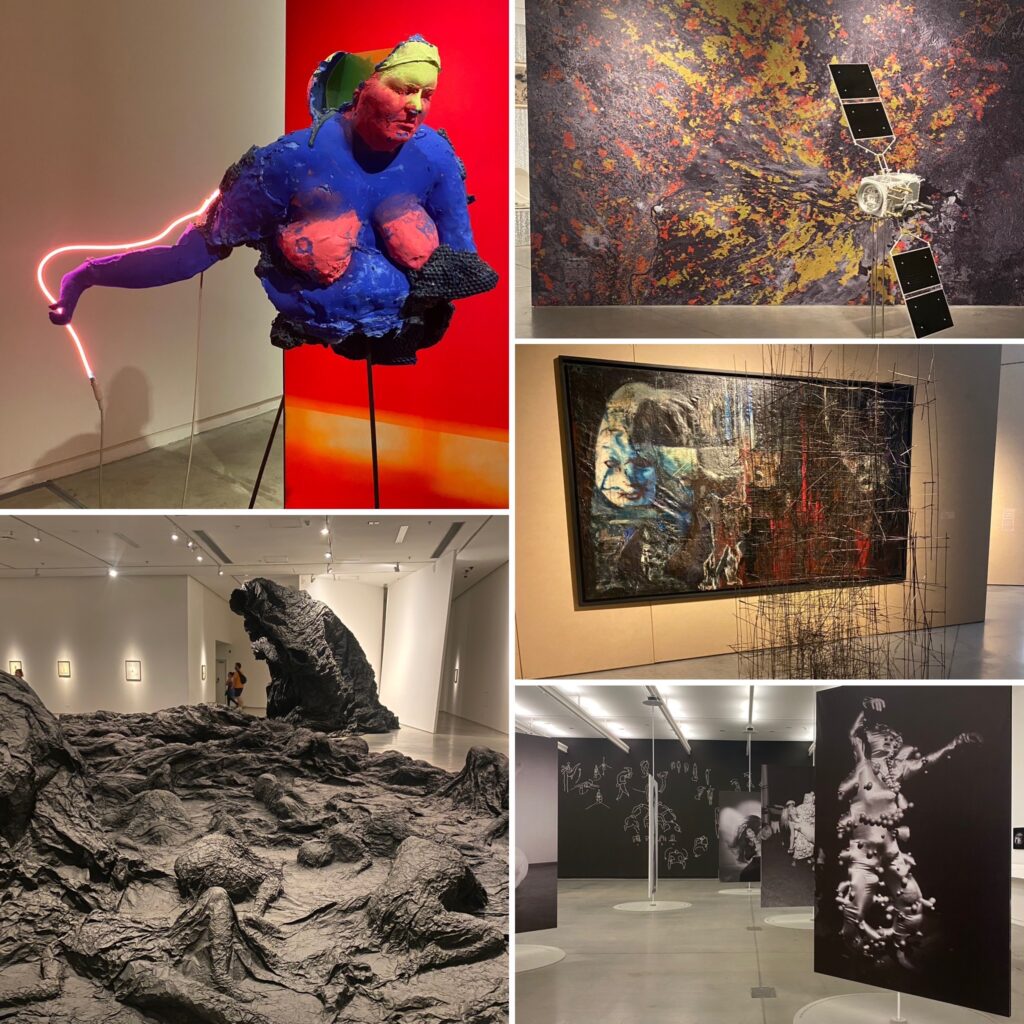
Some pieces reminded me of the abstraction that was Twin Peaks Season 3 (The Return).
Teatro Colon

Our last attraction in the city and possibly the prettiest. In a city filled with classical architecture, the interior of Teatro Colon still stands out. It has been called one of the best theaters for opera due to the outstanding acoustics. The opera and ballet seasons were on summer break, so instead of paying for Pixar Live! (in Spanish) we took a tour. The tour cost around $20 USD and lasted just over one hour.
The majority of the tour was spent in the foyer admiring the statues, French stained-glass windows, and varieties of Italian and Portuguese marble.
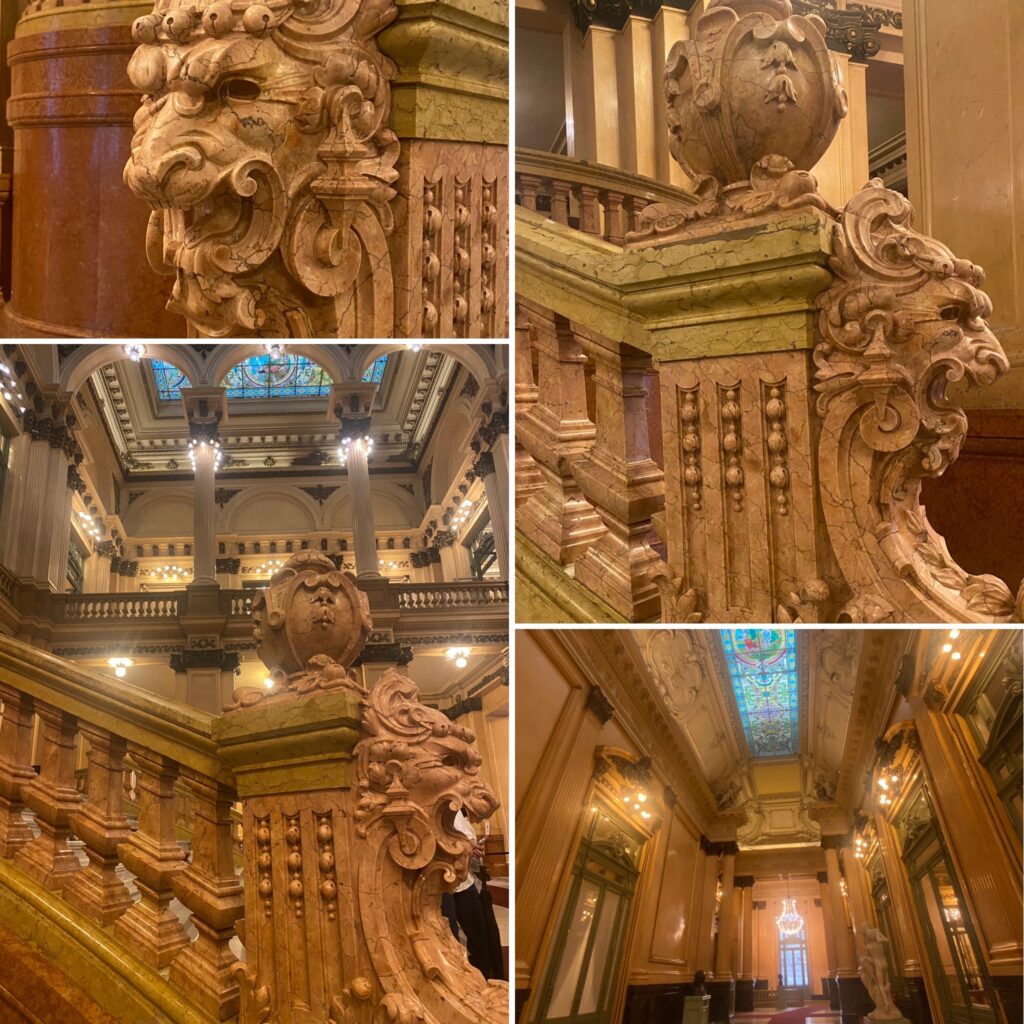
Eventually we made it upstairs to the Salon Dorado (the Golden Room). We checked out the paintings, and real gold ceilings plus the grand chandeliers.
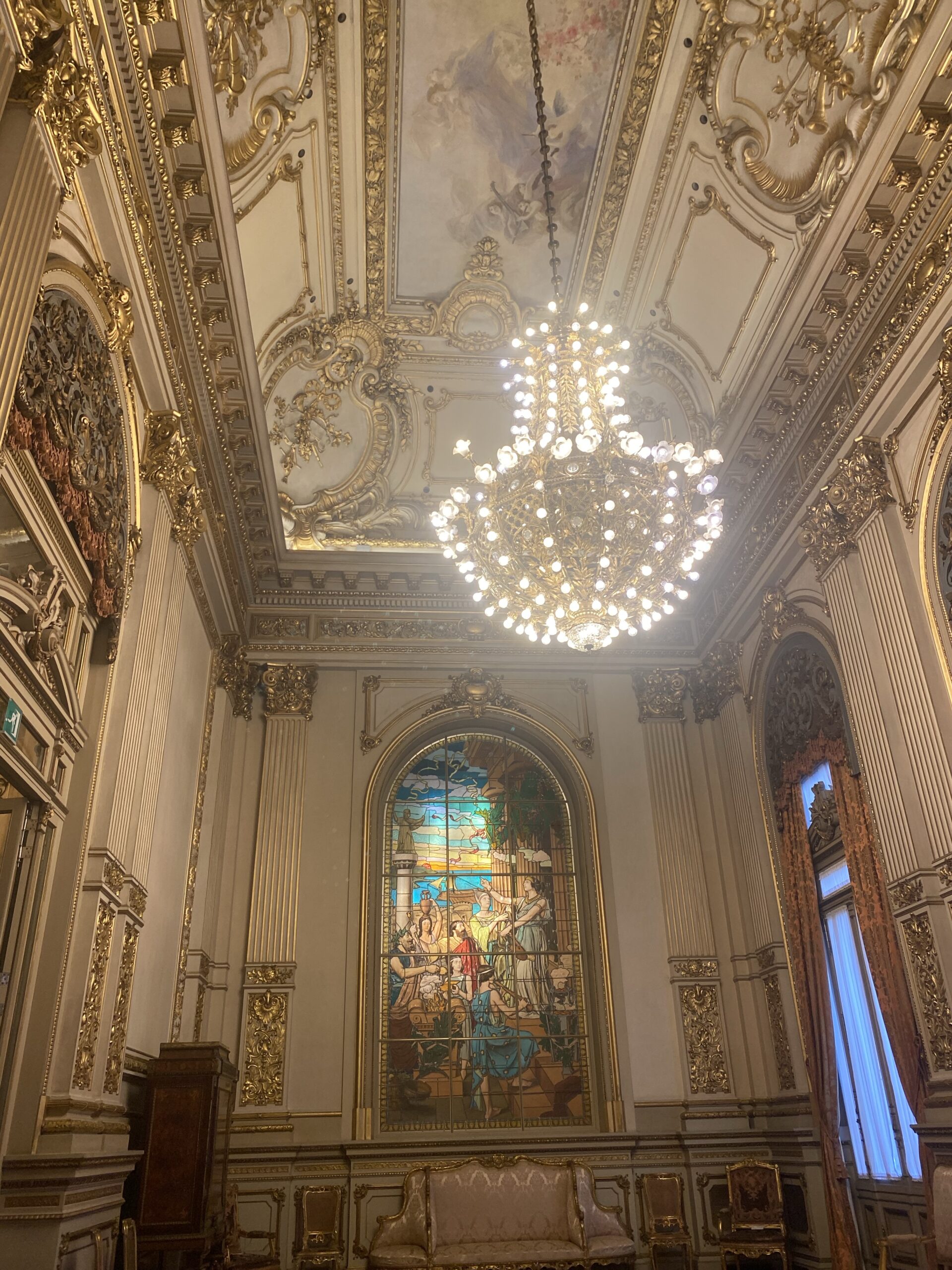
Then our group moved into the actual auditorium, made our way down to the front and sat down in the lush velvet seats. Above the orchestra seating there are an additional six decks of balconies and boxes. There are nearly 2,500 seats, but the overall capacity is nearly 3,000 because the top deck is standing room.
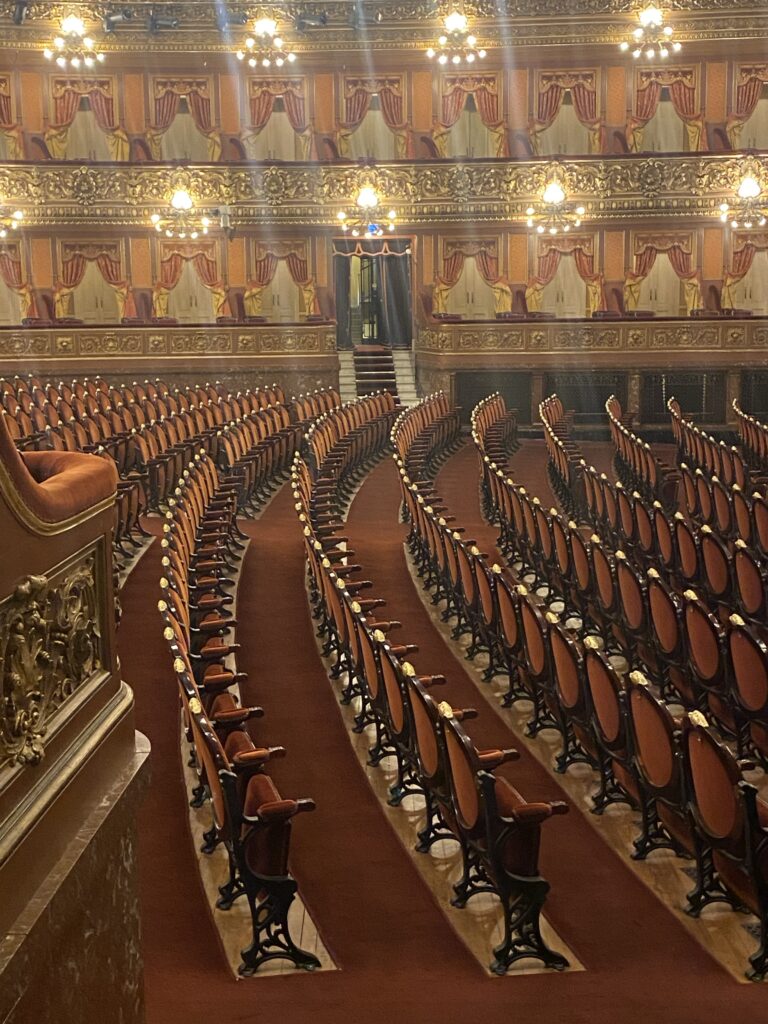
It was such a beautiful building made with careful construction, and we recommend experiencing a live performance there, although we understand that tickets can be difficult to come by.
Leaving Buenos Aires
We packed in a lot during our last week. Then a true Argentine experience: a surprise strike at Argentine airports cancelled almost every flight for a 24-hour period, giving us a bonus day in Buenos Aires, and delaying our trip to Iguazu by about 14 hours.
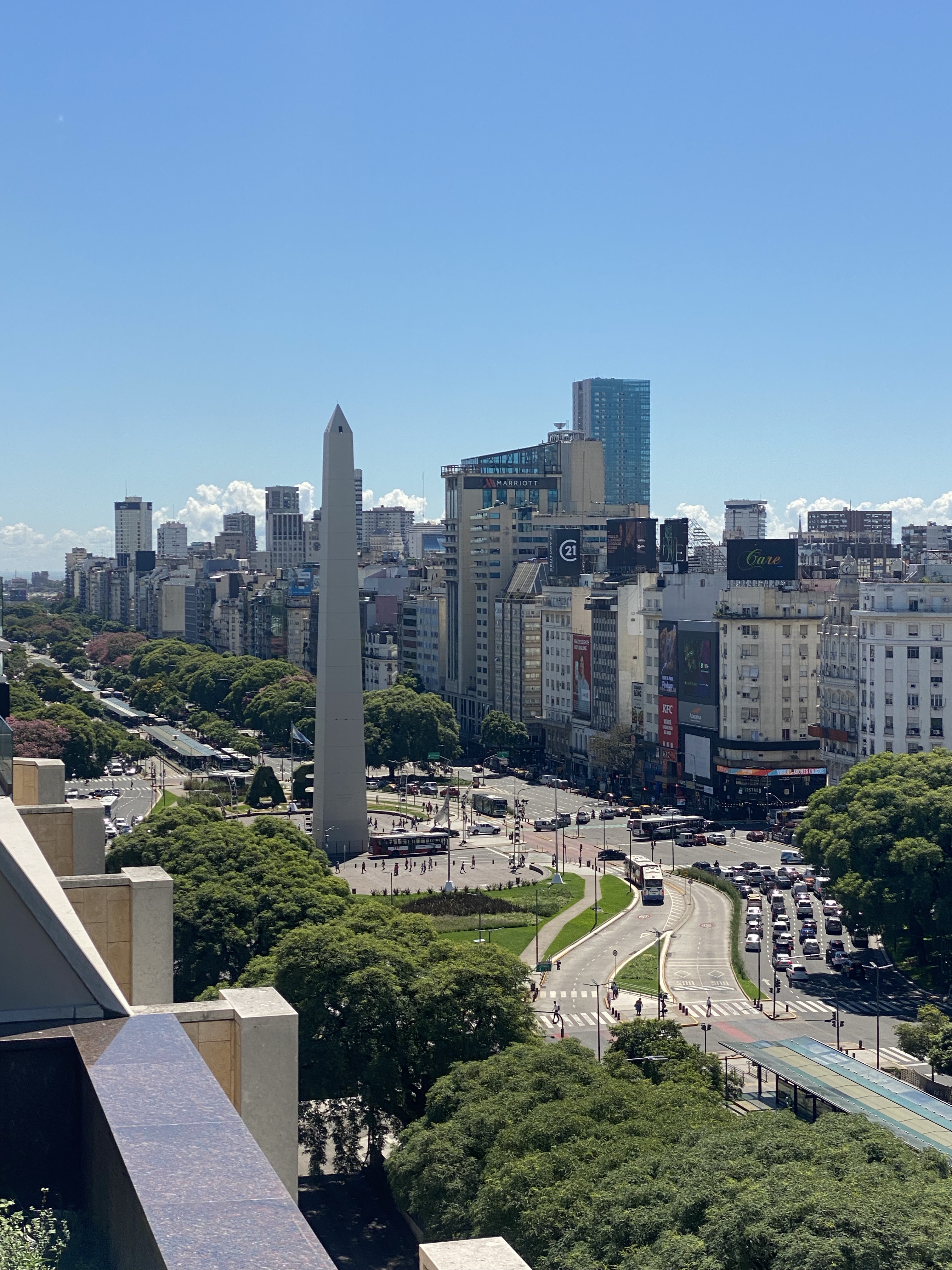
Staying in a downtown hotel, we walked around and and enjoyed the sunny weather by the pool for one last day. Finally the alarm went off at 2:30 AM so we could take the first flight of the day and still enjoy our two days at Iguazu Falls. This will conclude our three months in Argentina. More on that soon!
Though we explored many neighborhoods, walked through parks, and enjoyed several tours, Buenos Aires is not my favorite city. We kept thinking that if you were there for a week as a tourist, that the city would leave you wanting to come back: The architecture looks like Europe, there is a lot to see around the historic district, the wine is cheap, the steaks are abundant, you can see a tango show, etc. But overall, I felt more at home with the slower pace in the Mendoza area.
